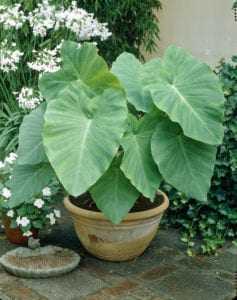Long Island Gardening: Growing and caring for summer flowering bulbs
By Ellen Barcel
In general, from the gardener’s point of view, there are two types of bulbs (tubers, rhizomes, etc.) — those that are planted in fall and are perennials, tolerating or even needing cold weather to survive and thrive (tulips, daffodils, hyacinths, etc.) and those that are planted in the spring and usually are not hardy.
This second set needs to be lifted in the fall (or treated as an annual) since it won’t survive Long Island’s cold winters. And yes, there are some exceptions. For example, there are some hardy gladioli, but most glads are tender.
Generally, when planting glads, dahlias, etc., you will get beautiful flowers the first year if you buy quality bulbs since the bulbs are producing flowers based on what the grower did to them the previous year — how much water, fertilizer, pest control, etc.
If you are going to keep these tender bulbs going in future years, you must treat them well this growing season. This includes sufficient water, fertilizer and pest control. Then they will be ready to go dormant and be lifted in the fall and stored away for the following spring planting.
In general, the tender bulbs bloom in the summer. So, when you select them, know that you’ll have to wait a while for the flowers. Also, remember that although most gardeners plant these as bulbs/tubers they are flowering plants and in general (although not all the time) produce seeds from these flowers. And yes, in general, you can save the seeds and grow them next year with varying degrees of success.
Always follow package directions for planting bulbs, corms and tubers, but rules of thumb include:
• Orient bulbs so you plant them top up.
• Add compost to the soil.
• Water in the beginning and during times of drought but don’t overwater as some bulbs will rot in soggy soil.
• Add fertilizer if you plan to lift the bulbs in the fall and keep them growing in future years.
• Stake the plant if very tall.
• The depth of planting is determined by the size of the bulb — tiny bulbs go just under the soil level, bulbs as big as glads could be planted eight inches deep.
• Plant in a sunny location for best flowering (except caladium).
• Use mulch to help keep down weeds and hold moisture in the soil if you have very sandy soil.

Caladium
Caladium is a tropical plant, also grown for its large, but extremely colorful leaves. Caladium do well in shade, making them an ideal plant to bring color into this area of your yard. A native of South America, there are currently over 1,000 named cultivars. They grow best in a soil pH of 6 to 6.5 and can reach a height of three feet tall in just one season.
Gladiolus
Gladioli are in the iris family. Because of their unique shape, they are sometimes known as sword lilies. They bloom from the bottom up. To keep the plant looking tidy, remove spent flowers. Since these can be very tall plants, put them toward the back of the bed, with shorter plants in front of them. Glads make great cut flowers, blooming in general in August. Planting can be staggered so that you extend the blooming season. They come in virtually every color of the rainbow.
Dahlias
Dahlias are native to Mexico. They’re known for their colorful, showy flowers. The tuberous perennial is related to sunflowers, daisies, mums and zinnias. Dahlias range in height from dwarf to those tall enough to need staking. Flower shapes are varied as well from single and double to pompom, cactus and even orchid shaped. Dahlias are generally pest free, except, like hostas, they can attract slugs and snails. Be prepared to use whatever controls you are most comfortable with (I just pick then off at night). They grow best in a soil pH of slightly acidic to neutral, meaning you may need to add lime to your soil. The American Dahlia Society can be reached at www.dahlia.org; the Long Island Dahlia Society is at www.longislanddahlia.org.
Elephant ears

Elephant ears (Colocasia esculenta) can be grown in full sun but prefer light shade. They are enormous plants easily reaching five or six feet in height with enormous, heart-shaped leaves. I’ve seen a row of them used to block out road sights. They add a tropical look to any garden they inhabit. They are grown primarily for their enormous leaves, which come in a variety of shades of green and black (actually dark purple).
Calla lilies
Calla lilies are natives of South Africa. They bloom midsummer through frost. Like glads and dahlias, they do best in full sun to only light shade. And, despite their name, they are not lilies at all.
Peruvian daffodils
Peruvian daffodils (Hymenocallis festalis), also known as spider flowers, are a South American fragrant wildflower. It’s only hardy in zones 8 to 10, so like the others above either must be treated as an annual or lifted in the fall. A soil pH of mildly acidic, through neutral to mildly alkaline is ideal. Peruvian daffodils are not true daffodils but in the amaryllis family. Propagate them by offsets. Divide every five or so years, depending on what the bed looks like, in winter before new growth starts. If growing them in a container, bring it into an unheated garage in the fall.
Other summer flowering bulbs include cannas (with their enormous red flowers), tuberous begonias and crocosmia. Lilies and daylilies are hardy perennials in our area and can be planted whenever you find them in the nursery. More on them in the future.
Ellen Barcel is a freelance writer and master gardener. To reach Cornell Cooperative Extension of Suffolk County and its Master Gardener program, call 631-727-7850.







